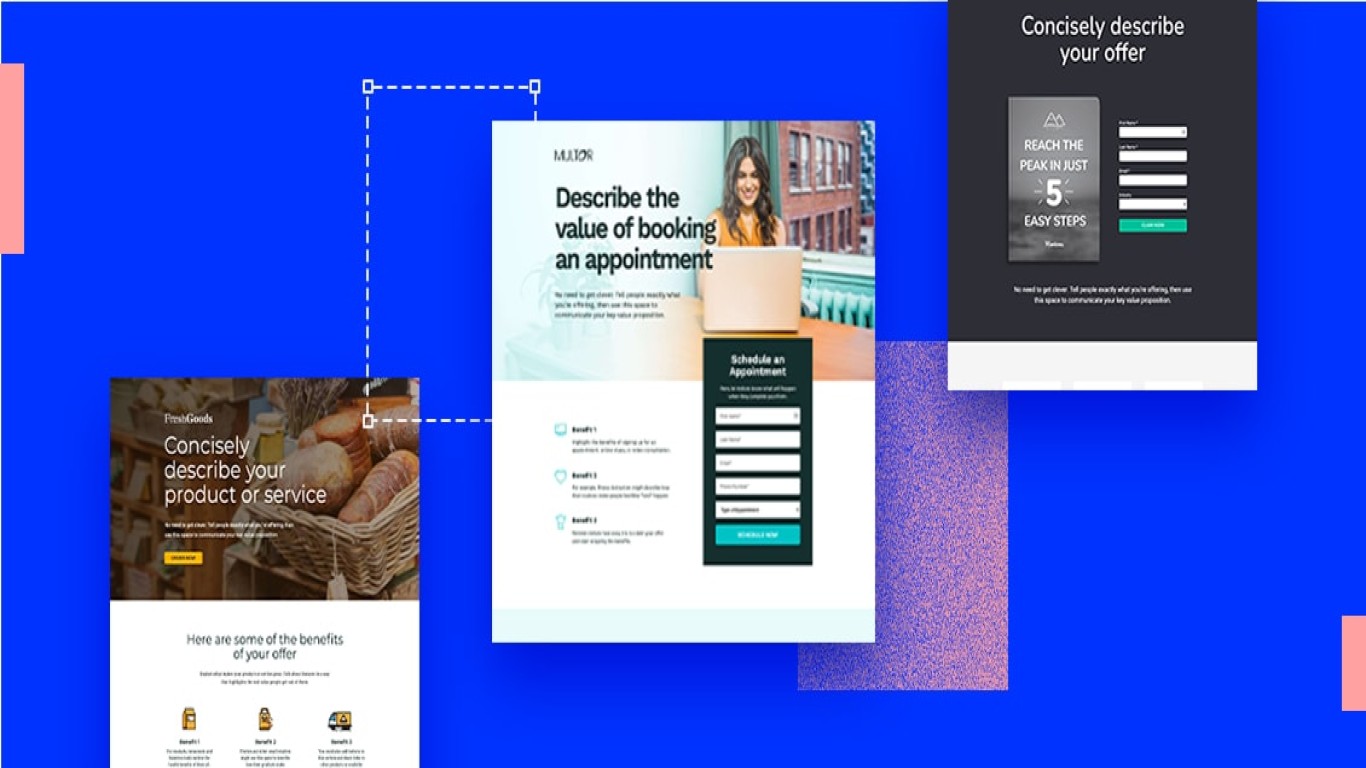Mobile Friendly Landing Page Design Techniques
Mobile Friendly Landing Page Design Techniques
In the rapidly evolving digital landscape, where mobile usage has eclipsed desktops, crafting a mobile-friendly landing page is crucial for businesses to capture and retain user attention. A well-designed landing page not only boosts user experience but also enhances SEO performance and conversion rates. Let’s dive into the techniques that can take your mobile landing pages to the next level.
1. Understanding the Importance of Mobile-Friendly Designs
In today's fast-paced world, the majority of users access websites via their smartphones. This shift demands a rethinking of traditional web design approaches, prioritizing mobile usability and accessibility. Mobile-friendly designs ensure your content is accessible, engaging, and functional on smaller screens, which is a significant factor in SEO rankings and user satisfaction.
Key Benefits:
- Improved User Experience: Users easily navigate and interact with content.
- Higher SEO Rankings: Google’s mobile-first indexing gives preference to mobile-optimized sites.
- Increased Conversion Rates: Streamlined design leads to higher engagement and actions.
2. Essential Techniques for Mobile Landing Page Optimization
To optimize landing pages for mobile, consider the following key techniques:
2.1 Responsive Design
Responsive design is the cornerstone of mobile optimization. It allows your landing page to adapt seamlessly to different screen sizes, ensuring content readability and accessibility.
- Fluid Grids: Use flexible grid layouts that automatically adjust based on screen size.
- Flexible Images: Ensure images scale correctly without losing quality or causing slow loading times.
2.2 Simplified Navigation
Navigation plays a crucial role in mobile user experience. Overly complex or cluttered navigation can lead to user frustration and increased bounce rates.
- Hamburger Menus: Utilize collapsible menu icons to save space and streamline navigation.
- Clear CTAs: Make call-to-action buttons large, direct, and easily tappable.
2.3 Faster Loading Times
Mobile users expect quick access to content, making page speed a critical aspect of design.
- Optimize Images: Compress images to reduce file size without compromising quality.
- Minimize Scripts: Limit heavy scripts that can slow down the page loading process.
- Use Caching: Implement caching to deliver static resources more efficiently.
3. Content Considerations for Mobile Landing Pages
Crafting content that aligns with mobile design principles is essential. Here’s how to ensure your message is effectively communicated on mobile devices.
3.1 Concise Copywriting
Mobile screens demand brevity. Users might skim long blocks of text, so keep your copy short and impactful.
- Prioritize Essentials: Highlight key information and benefits right at the top.
- Bullet Points: Use lists to break up text and make it scannable.
3.2 Visual Elements
While text is crucial, visual elements are equally important in capturing user attention.
- Hero Images: Utilize strong, relevant images that convey your message at a glance.
- Video Content: Incorporate videos wisely, ensuring they do not hinder page load times.
4. The Role of A/B Testing in Mobile Landing Page Design
A/B testing is instrumental in refining mobile landing pages, allowing you to analyze what works best for your audience.
4.1 Setting Up A/B Tests
Conduct tests on all critical components of your landing page:
- Headlines: Experiment with different headlines to see what resonates more.
- CTA Placement: Test varying positions for calls to action to find optimal placement for conversions.
4.2 Analyzing Results
Monitor analytics to gain insights into user behavior and preferences, enabling data-driven decisions for future optimizations.
5. Leveraging Tools for Mobile Optimization
Incorporating the right tools into your design process can streamline optimization efforts and enhance results.
5.1 Google’s Mobile-Friendly Test
Utilize this tool to evaluate your landing page’s mobile compatibility and receive actionable recommendations.
5.2 PageSpeed Insights
Assess and optimize site speed, a key determinant in both user experience and SEO performance.
5.3 Heatmaps
Implement heatmapping tools to visualize user interactions and identify areas for improvement.
Conclusion
Creating a mobile-friendly landing page is no longer optional—it's a necessity in today’s digital ecosystem. Employing responsive design, simplifying navigation, optimizing loading times, crafting concise yet impactful content, and continuously testing and refining your pages are all critical strategies. By embracing these techniques, not only will you enhance user experience and engagement, but you will also see tangible improvements in your SEO rankings and conversion rates.
FAQ Section
1. Why is mobile-friendly design important for SEO? Mobile-friendly design is crucial for SEO because Google prioritizes mobile-optimized sites in its rankings. Enhanced usability leads to better user experience, which can result in longer site visits and lower bounce rates, positively influencing SEO.
2. How can I improve the speed of my mobile landing page? Improve your page speed by optimizing images, minimizing the use of heavy scripts, enabling browser caching, and using content delivery networks (CDNs).
3. What is a responsive design, and why is it important? Responsive design ensures that your website adapts to various screen sizes, providing an optimal viewing experience across all devices. It is essential for maintaining a positive user experience on mobile devices and can lead to higher engagement and conversions.
4. How often should I conduct A/B testing on my landing page? A/B testing should be an ongoing process. Regular testing, especially after significant changes or updates, can provide insights into user preferences and help you make data-driven decisions for continuous improvement.
5. What role does content play in mobile landing page optimization? Content is key in mobile landing page optimization. It should be concise, engaging, and aligned with mobile user behavior, as users typically read less and interact quickly on smaller screens. Prioritize essential information, and use visuals strategically to capture attention.
#mobilefriendly #landingpage #designtips #webdevelopment #uxui
